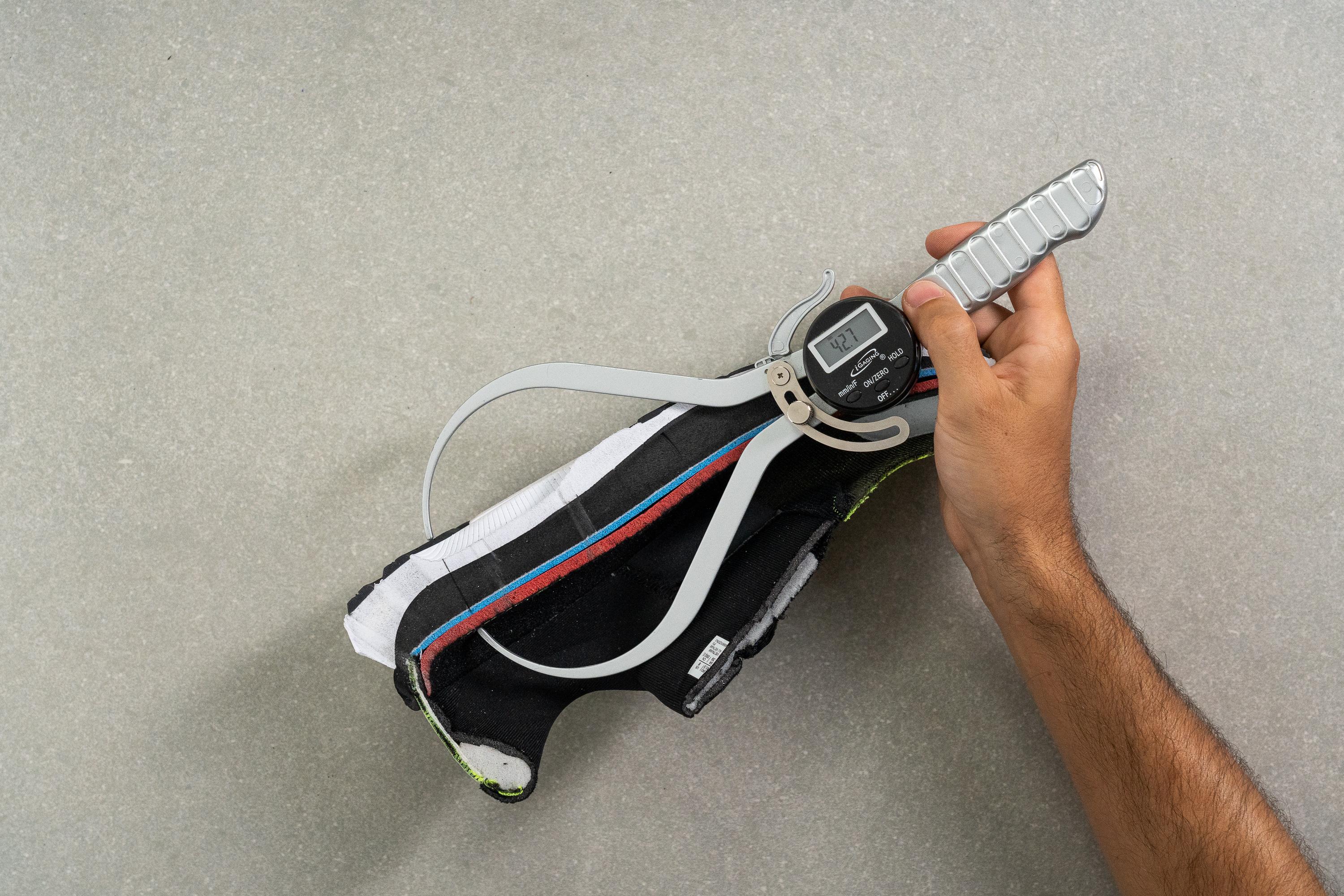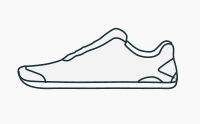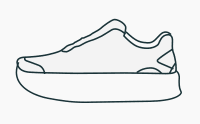Stack Height: Tool, Shoe Lab Data & In-Depth Guide
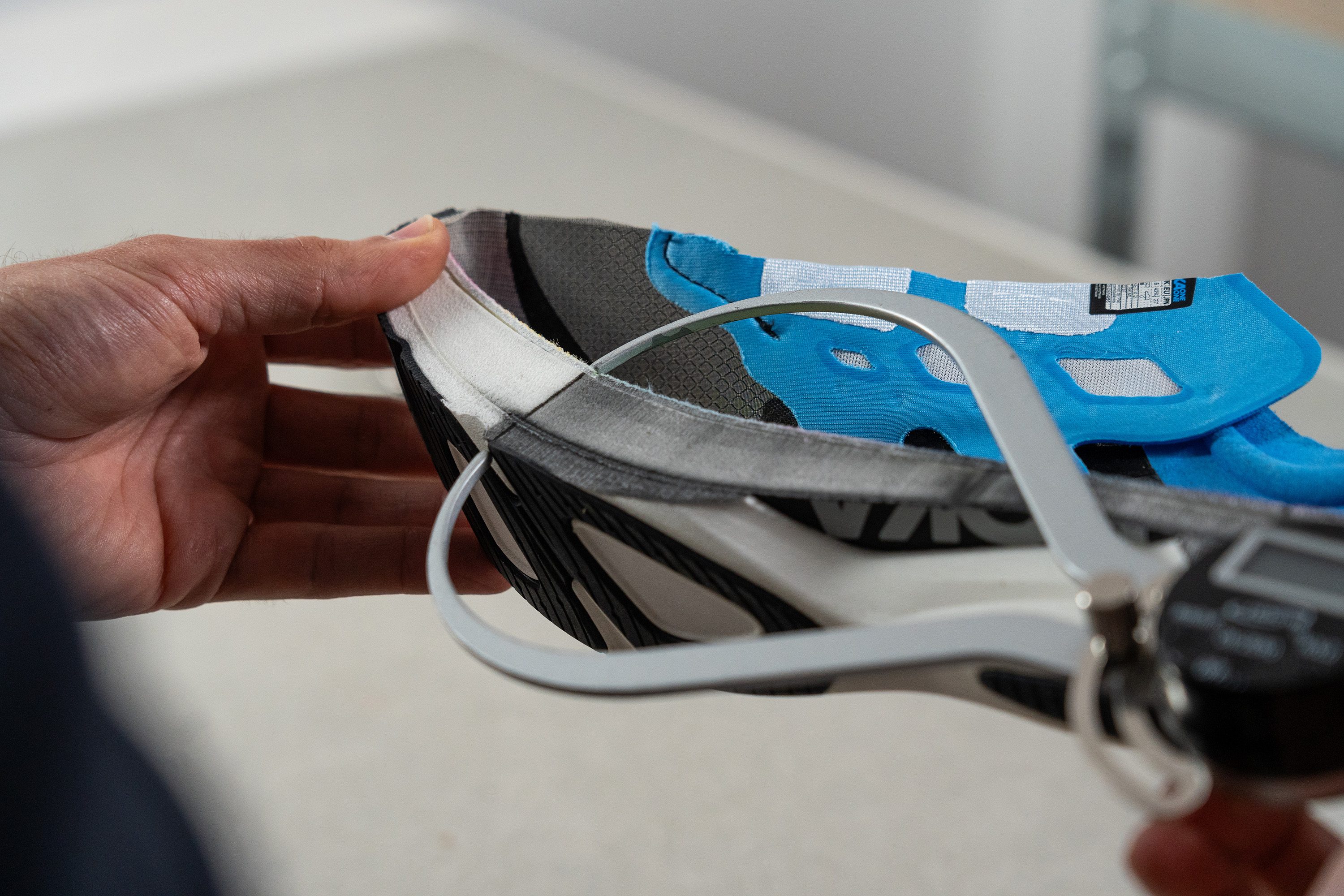
We spent 50+ hours creating a tool and doing the research for this guide. We’ve covered stack height in great detail and backed everything with our lab data. Our tool will tell you which stack height works for you by using your criteria and going through our database.
Stack height is the amount of material between your feet and the ground. It is measured when your feet are not in the shoes as the midsole will compress due to a person’s weight, distorting the data. It’s given in millimetres and includes the height (thickness) of the insole, midsole and outsole.
For beginners, it’s best to choose running shoes that are not too flat (low to the ground) and not too high. Look for stack height in the 25-35mm range.
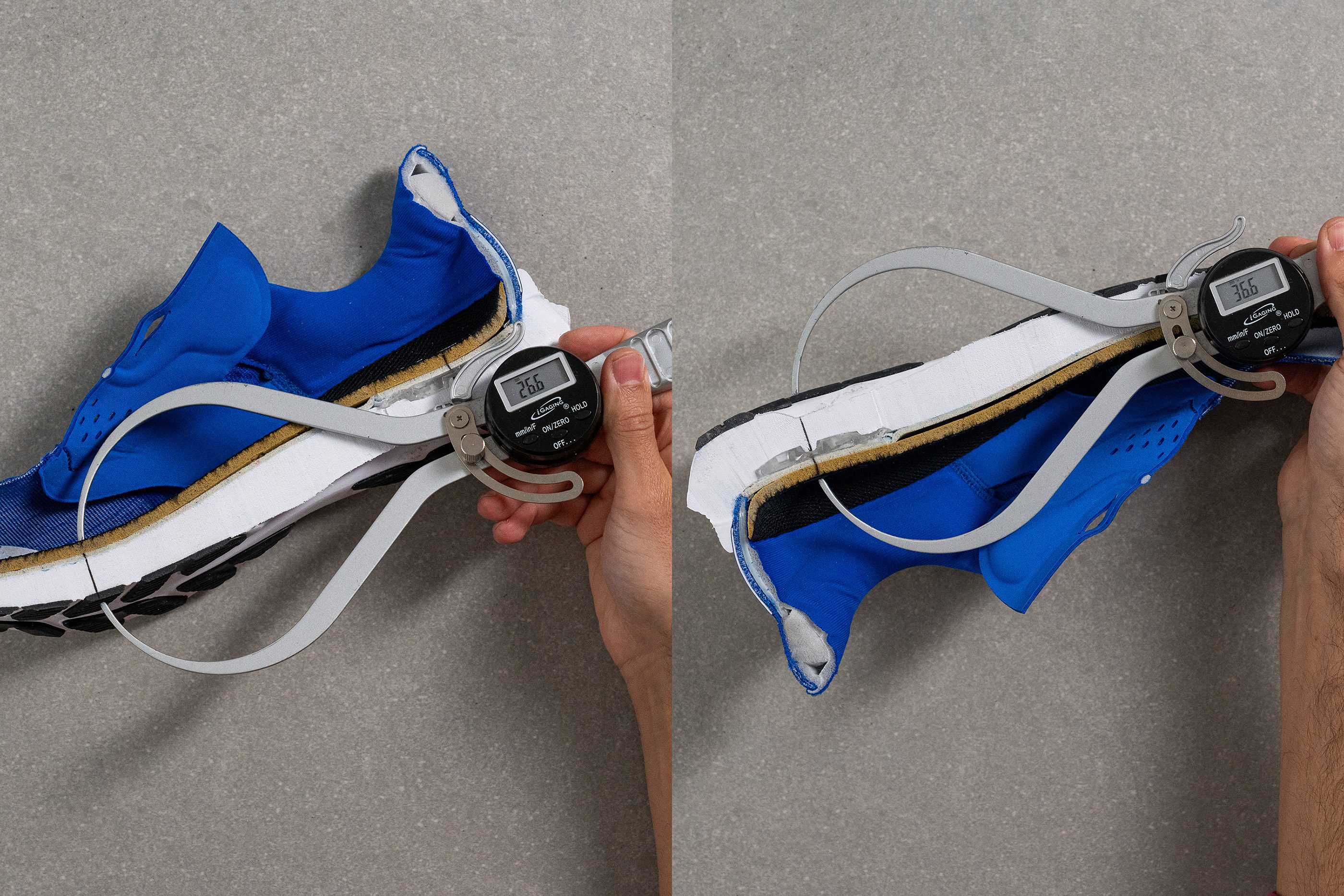
In running shoes, we focus on both heel stack height and forefoot stack height. Zero-drop running shoes are the only case where heel stack height equals forefoot stack height. In all other cases, the heel is higher than the forefoot.
Tool: Which stack height do you need
Use our tool to find out which stack height range might work for you. Based on your criteria, the tool will offer THE 3 best-rated picks.
Stack height and its correlation to footstrike, ground feel, and runner’s weight - it’s all explained in detail below.
Stack height categories
Based on the heel stack height, we group shoes into 4 categories:
- Barefoot running shoes (the lowest stack height: 3-8mm)
- Minimalist running shoes (minimal stack height: 3-13mm)
- Regular running shoes (medium stack height: 9-35mm)
- Maximalist running shoes (maximal stack height: 35-50mm).
Barefoot running shoes have the lowest stack height - they are closest to the ground. They are also insanely flexible - usually, you can roll them up.
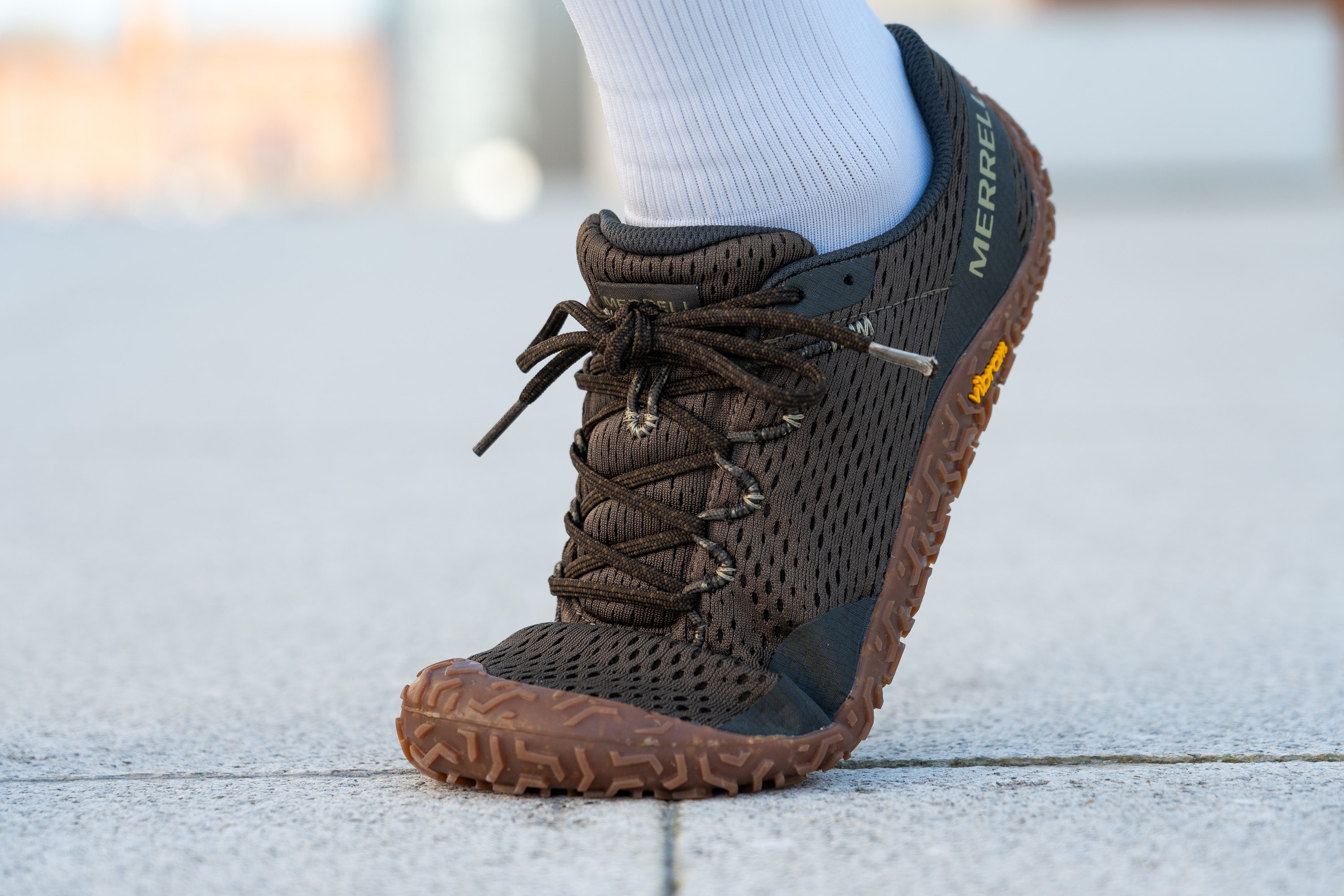
These shoes can’t be missed; no other shoes have such thin midsoles. In them, you feel the ground only. They ask for a serious adaptation period and it’s best to use them on the soft ground only in the beginning.
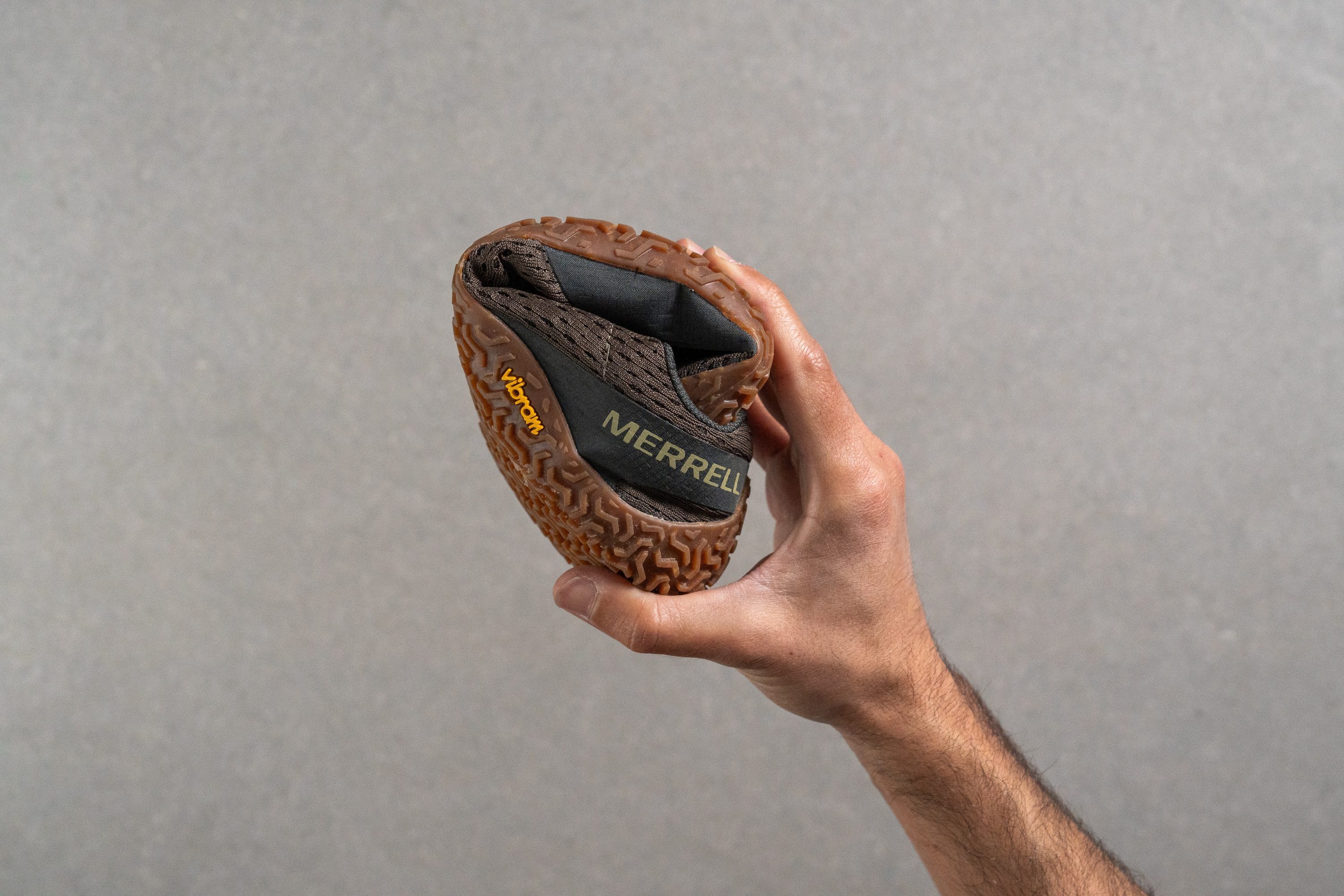
There are 5 minimalist factors that make a shoe minimalist. In the case of the stack height, the minimal one means you get to feel the ground more than the shoe. It also means your body might adapt to the terrain because your legs will have to absorb the impact.
Flexibility of a minimalist running shoe
These shoes offer a “natural feel” while running - they won’t weigh you down or bother you with extra junk in the trunk. Runners use these shoes when a) doing tempo work or b) looking for a minimalist running experience.
If considering these for the first time, keep in mind that they:
- might increase the risk for Achilles tendon injury as this study has shown.
- might help with knee pain (as explained here).
- might reduce runners’ susceptibility to patellofemoral disorders (source).
- can improve running economy and performance in trained runners (read this study).
Regular running shoes are average in height: not minimalist, not maximalist. They don’t stand out. These shoes are usually very versatile and offer both cushioning and responsiveness.
Running in a regular running shoe: Pegasus 40, heel stack height 30.2 mm
These shoes are the most beginner-friendly. If you’re looking for softer running shoes, keep in mind that the hardness of the midsole does not seem to influence running-related injury risk.
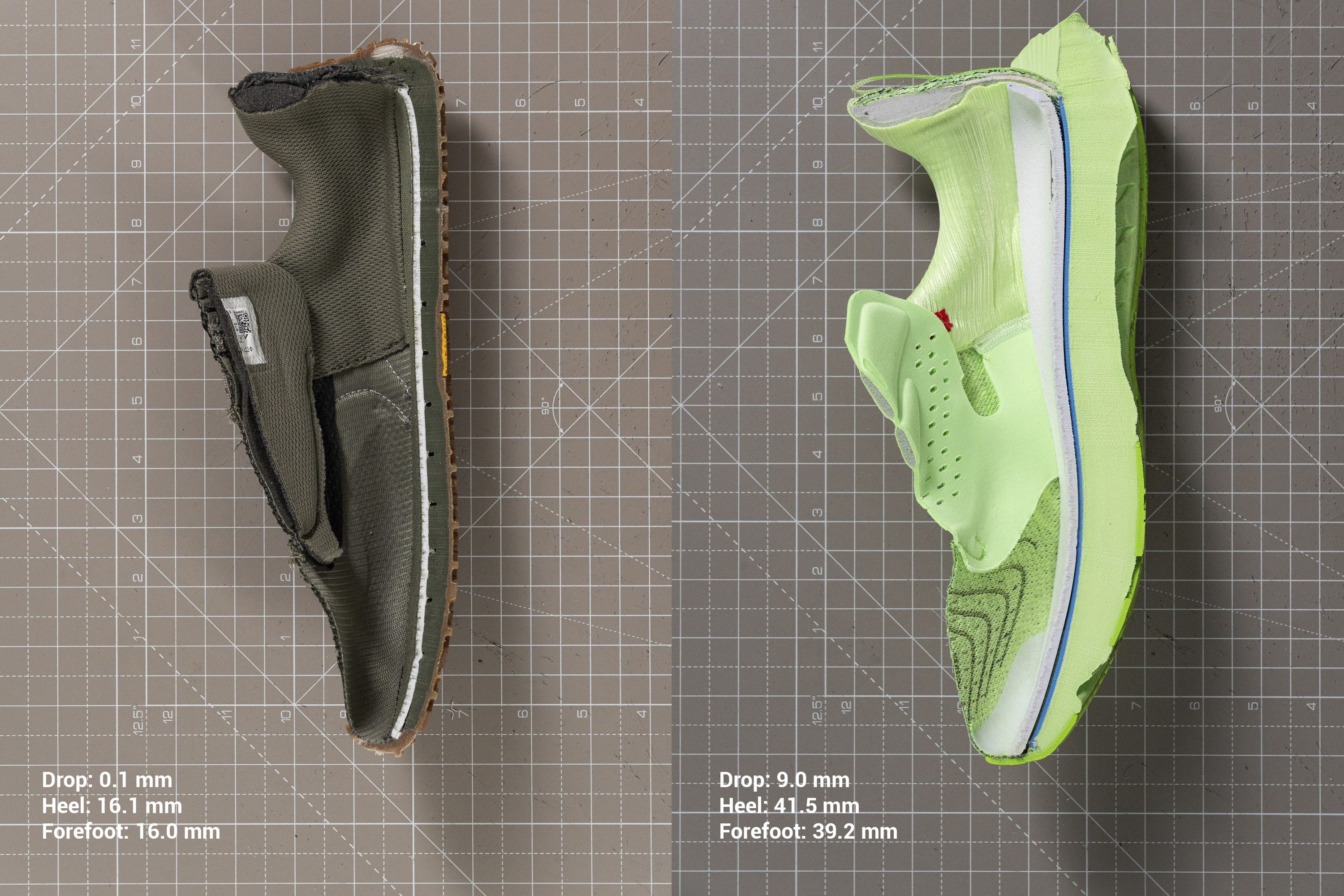
Maximal stack height is found in maximalist running shoes. No mistakes here, these shoes are huge.

They are recommended for heel strikers, heavier runners, and runners looking for extra or plushy cushioning and avoiding any ground feel. Usually used for recovery runs and long runs. Today, many of the premium race shoes are high-stacked, even maximalist, and soft.

Good to know if considering maximalist running shoes:
- Choosing a maximalist shoe may be less risky than minimalist shoes when shifting from traditional running footwear, particularly in the initial month of exposure (source).
- Runners who are new to running in a maximal shoe may be at an increased risk of injury as shown in this study.
- The eversion mechanics in the maximal shoes from this study may place runners at a greater risk of injury (source).
- Running in highly cushioned shoes increases leg stiffness and amplifies impact loading (explained in this study).
- Maximalist running shoes may increase the external impact loading during downhill treadmill running (read more here).
- Highly cushioned shoes did not show immediate changes in running biomechanics (as explained here).
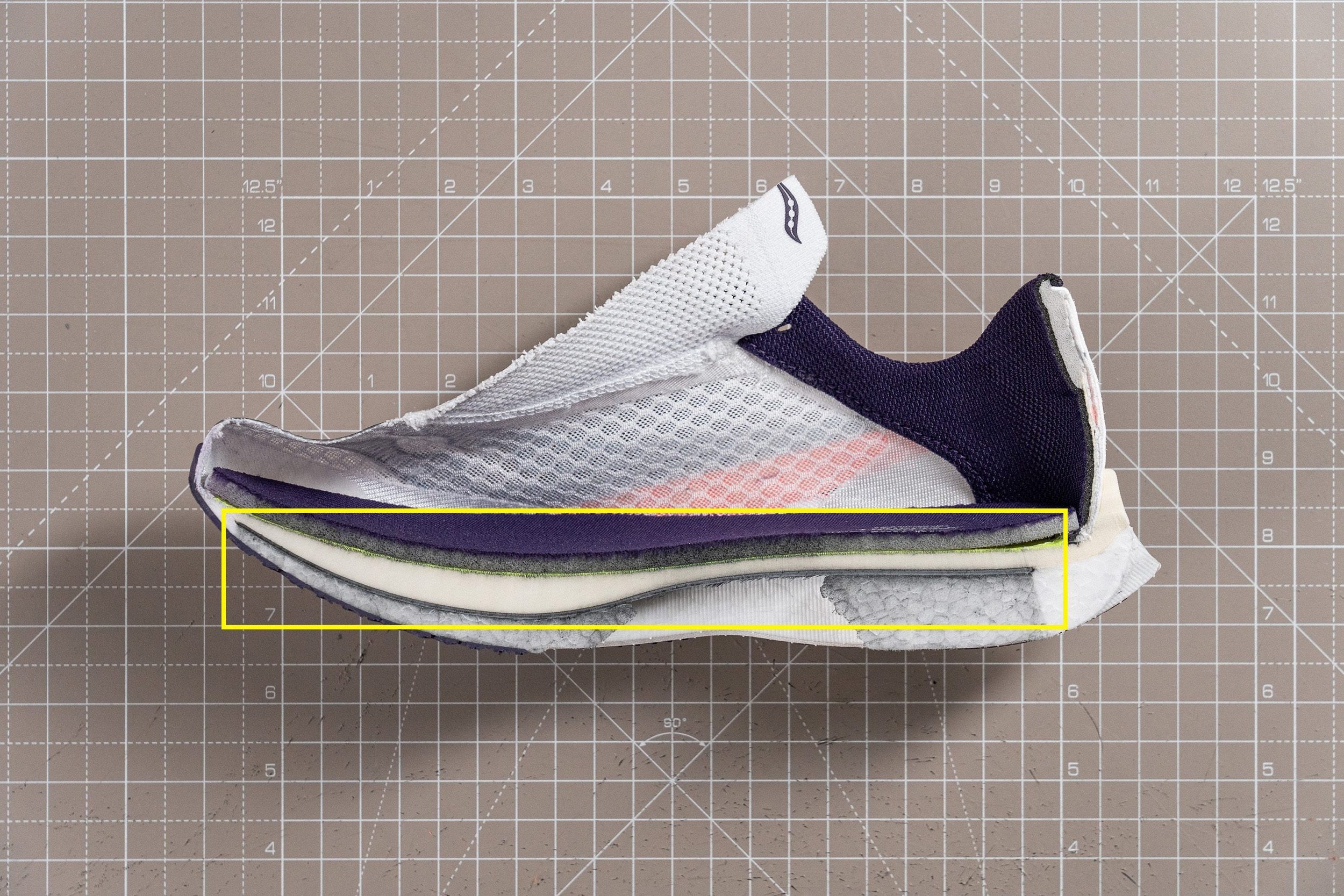
A subgroup is made of carbon-plated running shoes - they are also maximalist but usually performance-oriented and race-ready. It's also important to check which foot strike they work best for.

How to measure the stack height
When looking at the brand’s specifications, stack height is sometimes given with and other times without the insole thickness. In our lab, we always include the insole because:
- You obviously run with your insoles
- We want consistency in our results
- We measure it the same way for all shoes using World Athletics standards.
Per rules set by World Athletics, stack height is measured at 12% and at 75% of the inside length of the shoe. This is exactly how we measure the stack height, and you can read more about it in our methodology. If you want to do it yourself, this is how.
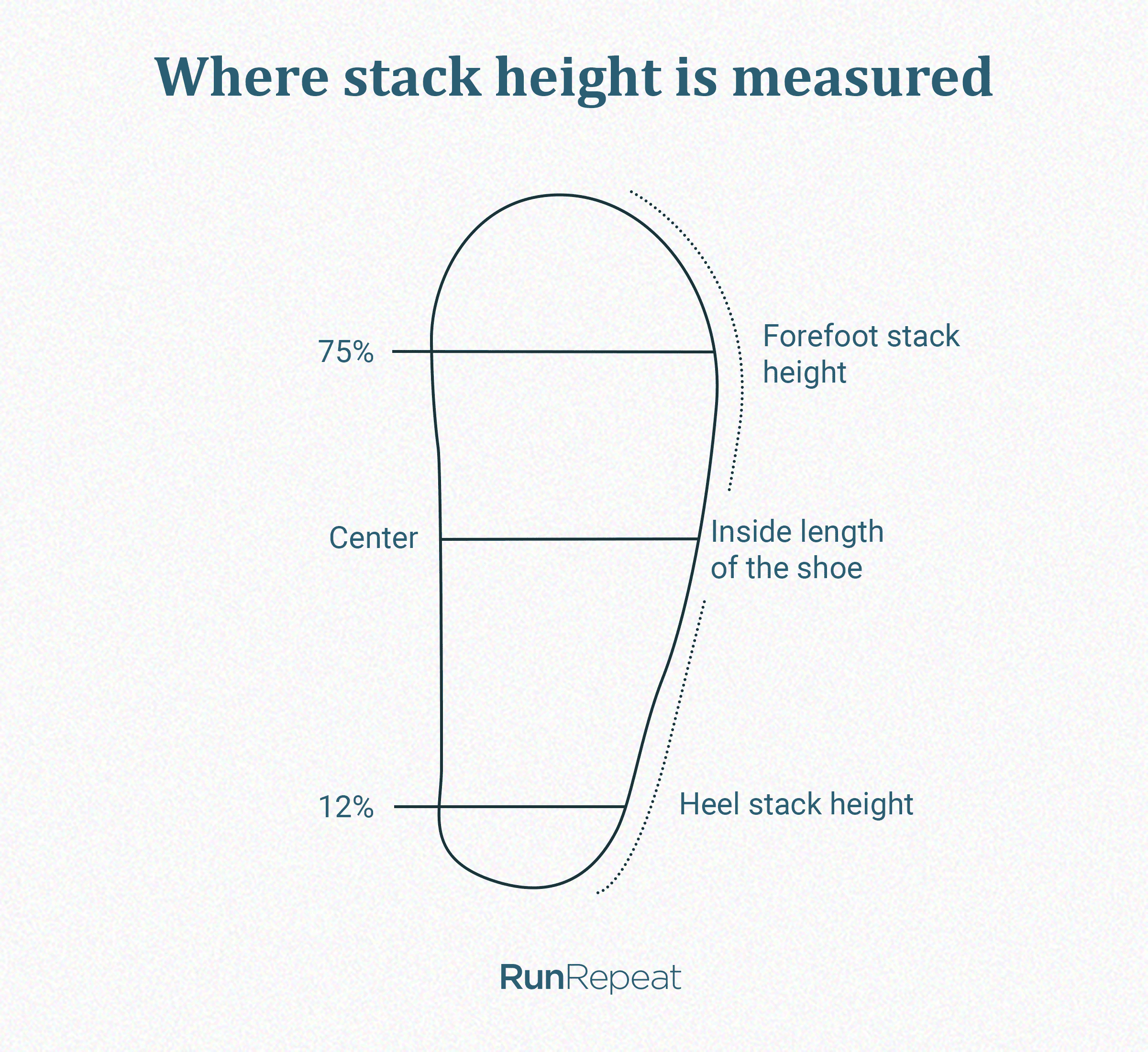
In our lab, we cut open shoes to see what’s inside and measure all the possible segments. We also mark the 12% and 75% of the inside length of the shoe prior to using a calliper.
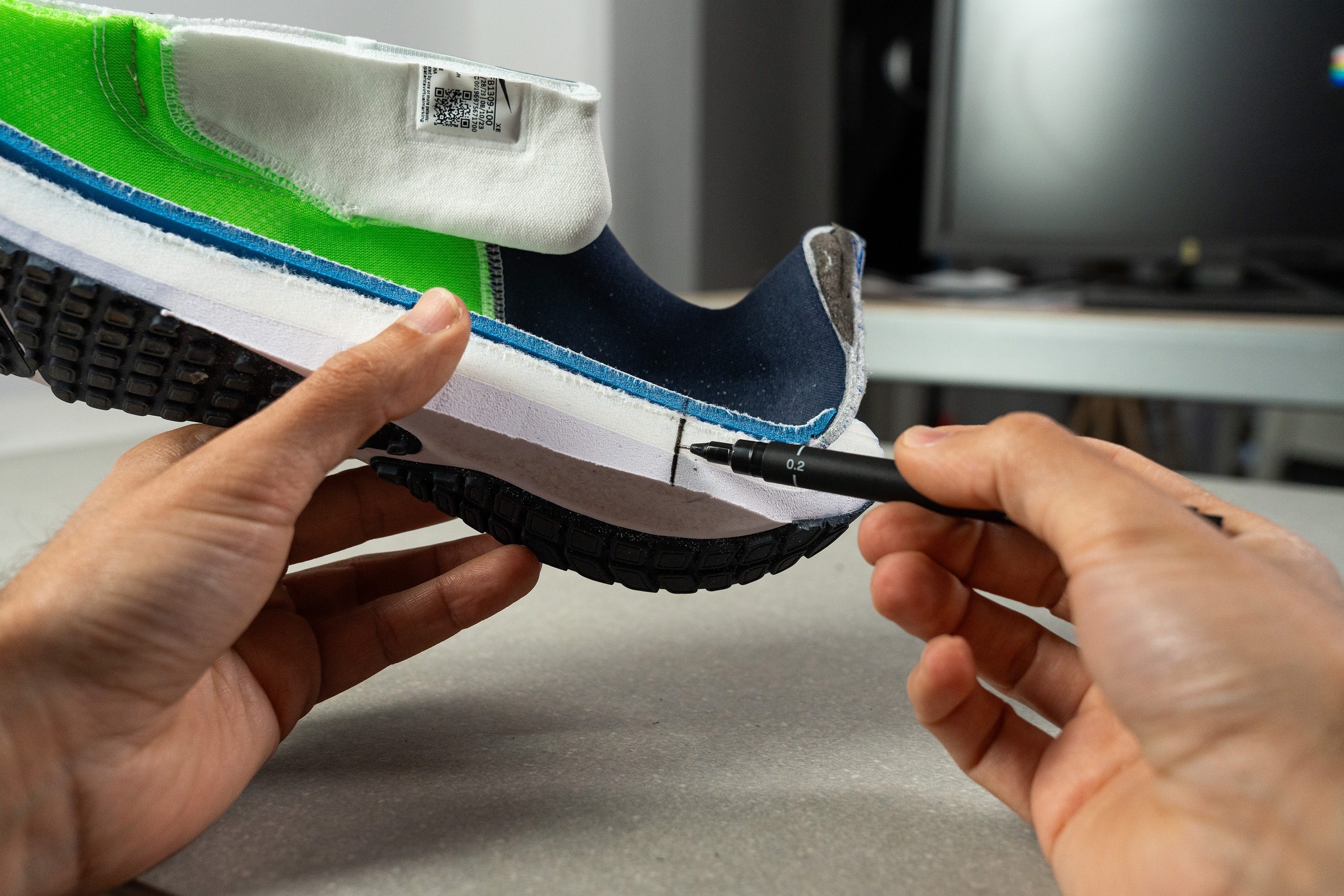
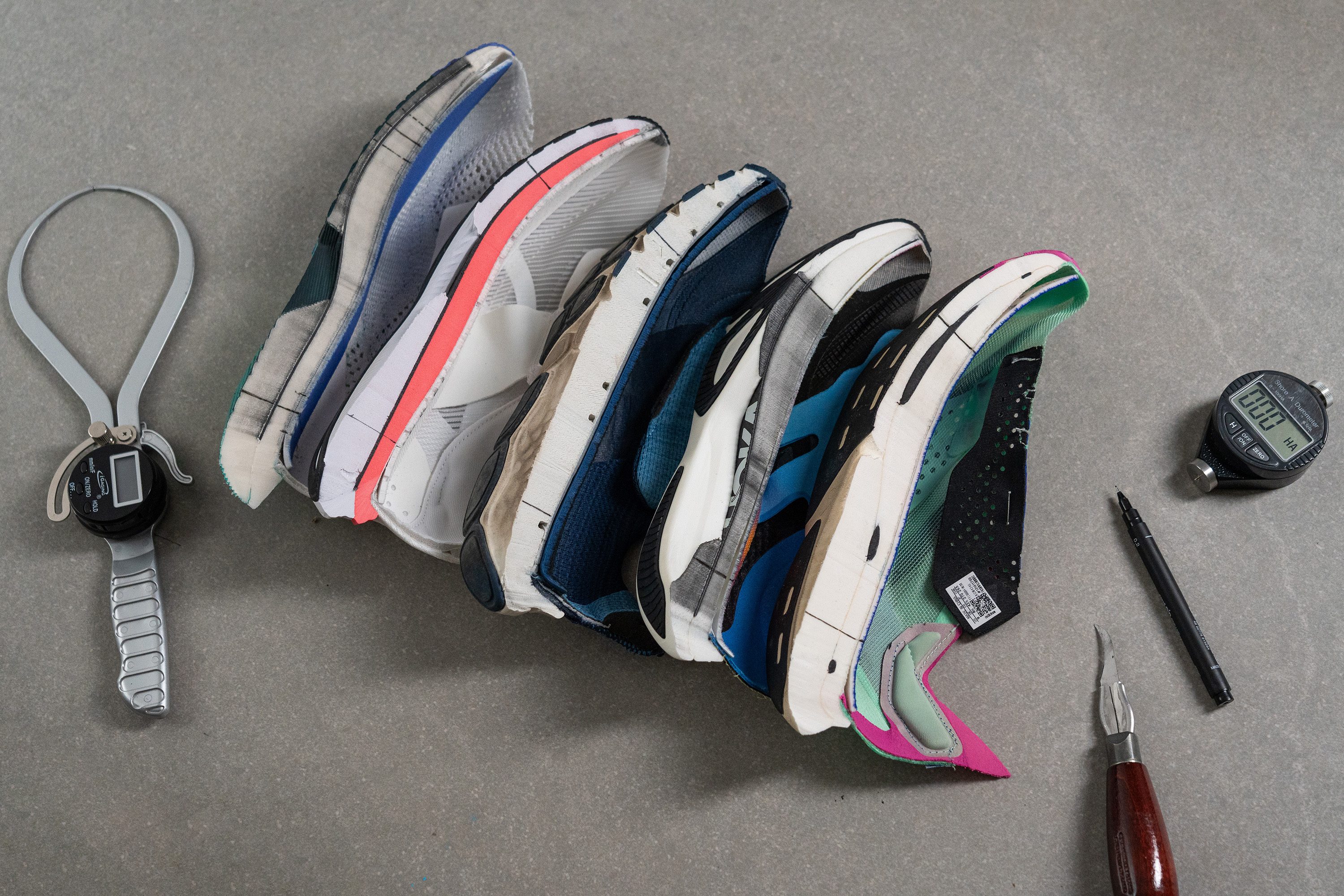
Tool: Stack height and heel drop correlation
Heel to toe drop is the difference between heel stack height and forefoot stack height. While heel-to-toe drop varies from 0mm up to 15mm, stack height varies from 3 to 50mm. Here are 4 examples from our lab:
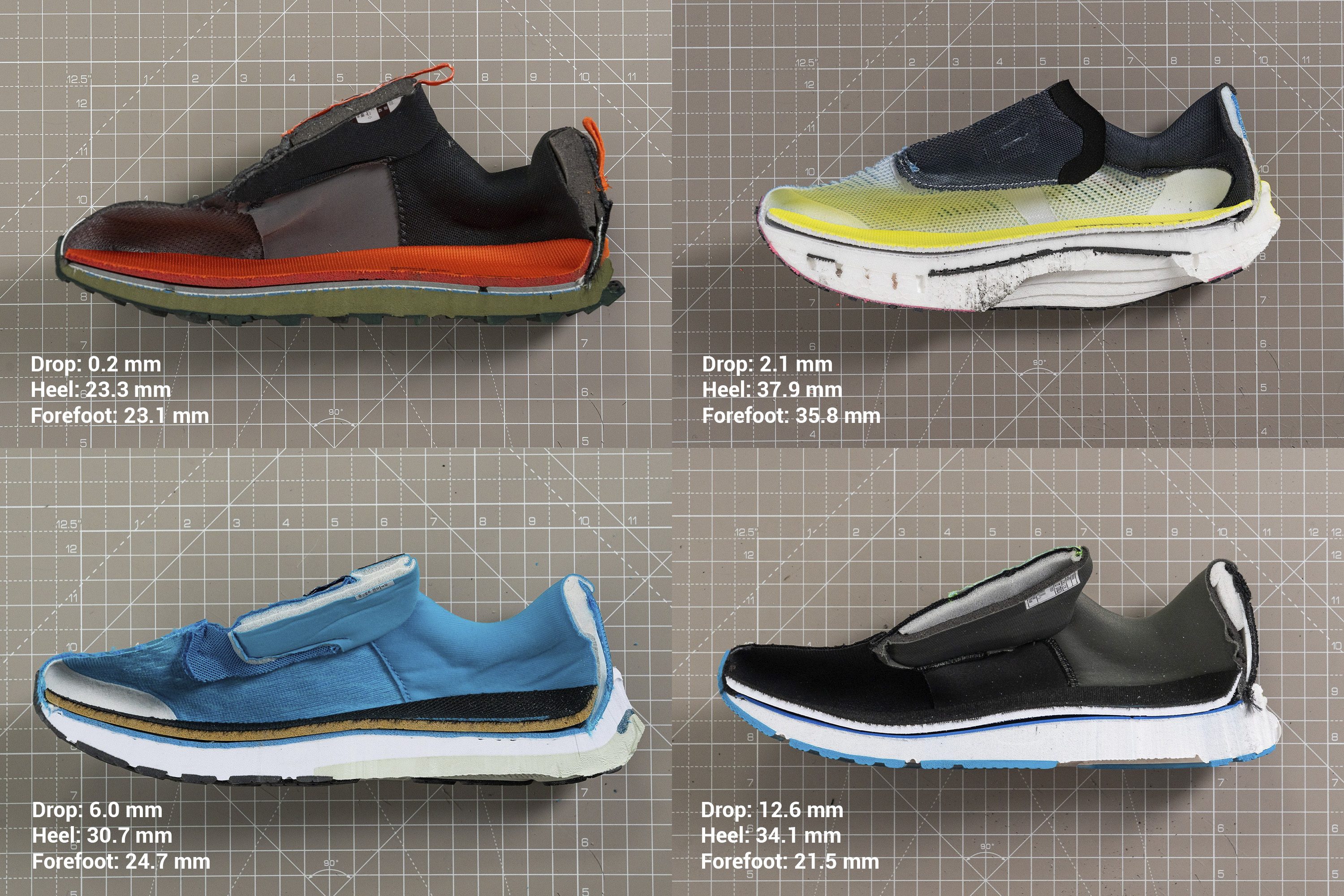
Lab insight: We rarely get the same numbers as those specified by the brands. So, take the brand’s numbers with a grain of salt and, better yet, consult the lab test results first. We wrote about these deviations extensively in our guide on the differences in stack heights.
For example, Gaviota 3 has a 5mm drop as per its specifications, but in our lab, we measured almost 10mm. On Cloudswift is said to have a 7mm drop and we measured 11.6mm.
Stack height and ground feel
The amount of cushioning separates running shoes into 4 different categories.
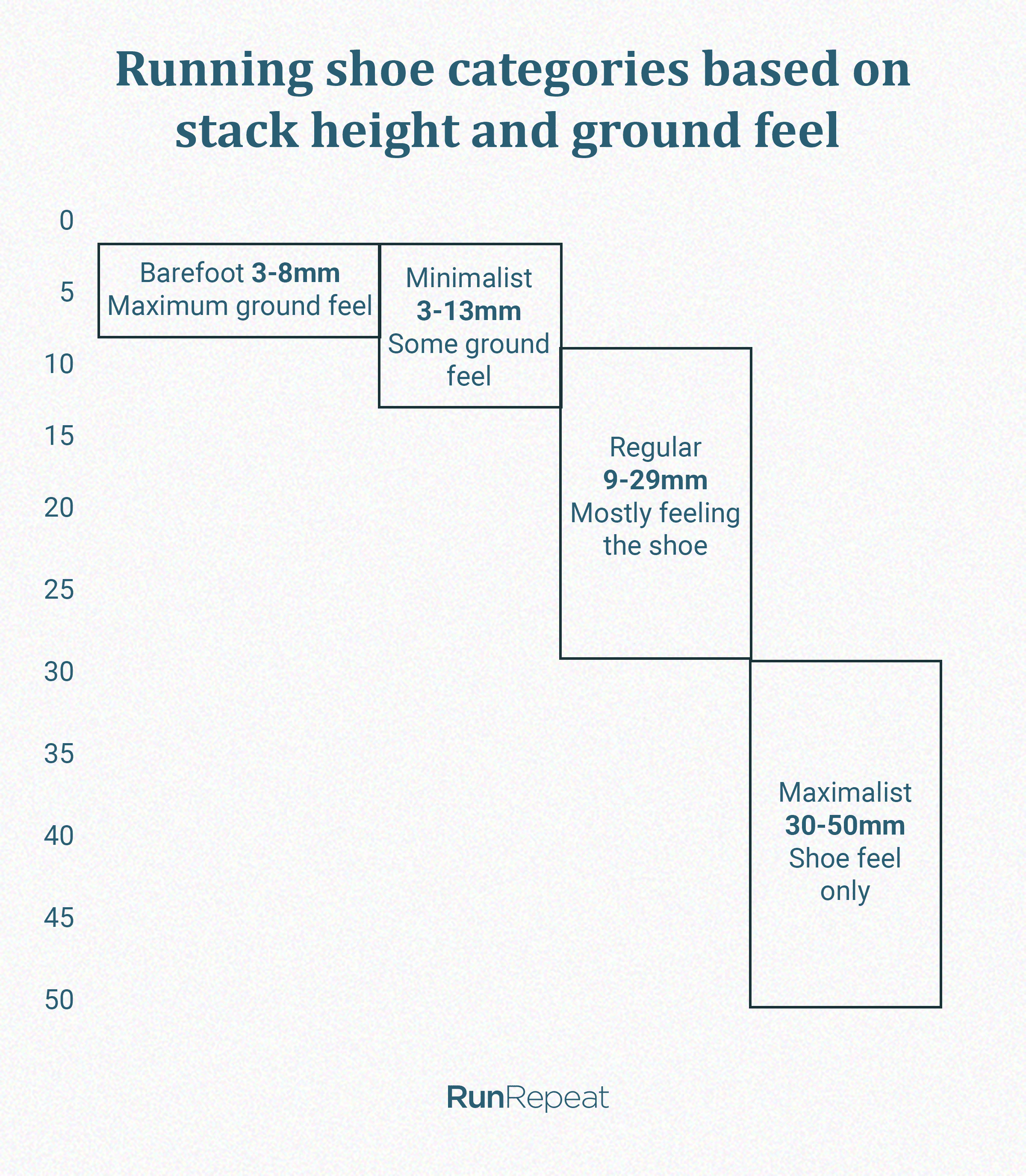
These categories don’t only tell us the stack height, but also how much ground feel you can expect. The more you feel the ground, the less you feel the shoe and vice versa.
Stack height & foot strike correlation
How and where you land while running depends not only on your running form but also on the amount of cushioning in your shoes. There are 3 types of foot strikes: forefoot strike (landing on your toes), midfoot strike, and rearfoot strike (landing on your heel).
It’s best to look for cushioning in the places where you land. In our database, the breakdown looks like this: 42.3% of shoes are made for heel strikers, 34.1% of shoes are made for all foot strikes, and 23.5% of shoes are made for forefoot and midfoot strikers.
In general, this is how foot strike relates to stack height:
| Heel stack height | Foot strike | |
|
Barefoot shoes
|
3-8mm | Forefoot, midfoot |
|
Minimalist shoes
|
3-13mm | Forefoot, midfoot |
|
Regular shoes
|
9-29mm | All |
|
Maximalist shoes
|
30mm and up | All, but often superb for heel strikers |
|
Carbon-plated maximalist shoes
|
30mm and up | All, but the majority is still better for forefoot strikers |
Stack height for heel strikers
Since impact forces are the highest in heel striking, that type of landing asks for the biggest amount of cushioning, i.e., the heel stack height should be high. You can browse shoes for heel strikers here.
Landing on the heel in Kayano 30
Also, this is the reason why shoes with lower forefoot stack height (barefoot and minimalist) are usually recommended to the forefoot and midfoot strikers.
Here's how heel-strike-friendly shoes look like with all that technology in the heel area:
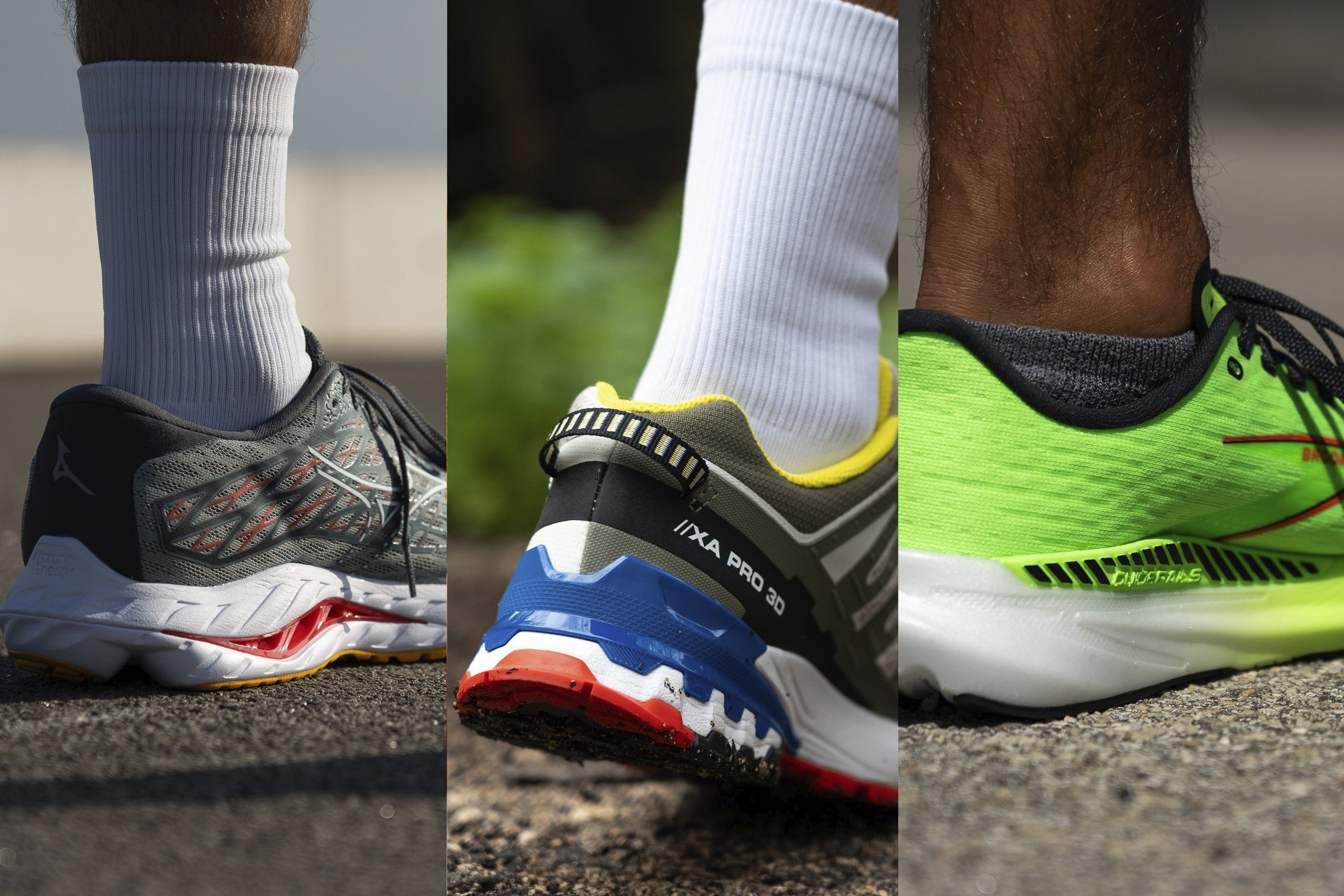
Now that you know how much stack height you want, it's important to know what kind of cushioning will greet your feet. For this, we look at the shock absorption and energy return.
Energy return and shock absorption of running shoes for heel strikers
Energy return tells us how responsive the shoe is. It represents just that: energy return. When we hit the ground, some of the energy is lost as heat or deformation, and some is returned. The more energy return, the more responsive the ride!
Testing the energy return and shock absorption of running shoes for heel strikers [following the ASTM F1976 13 protocol]
[/local_video]
Shock absorption, on the other hand, tells us how good the midsole is at dampening the impact. The better it is, the less stress is sent to our legs while running. Great!
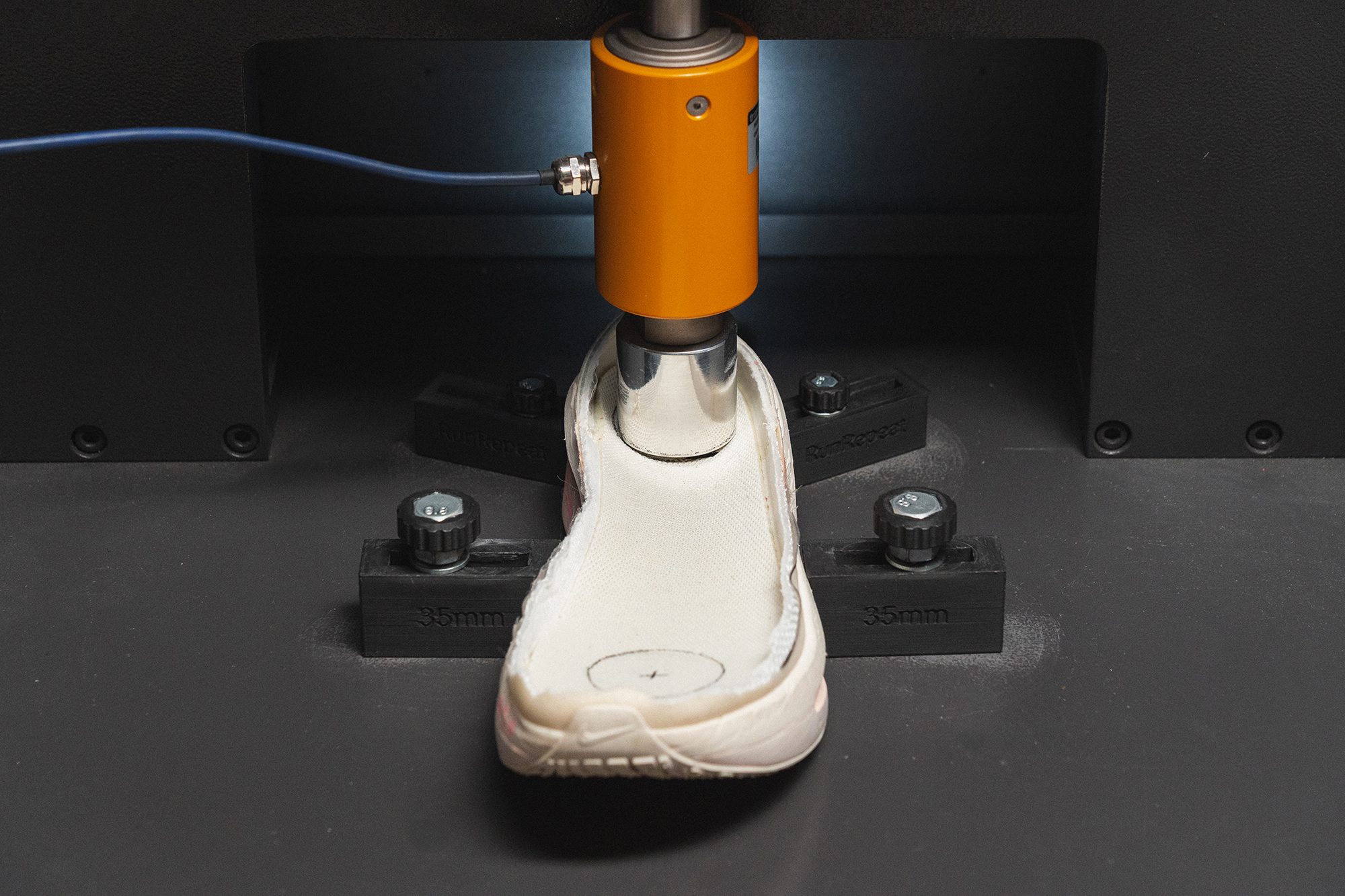
Forefoot strikers: the price they have to pay
When talking about stack height, most people assume it’s the heel stack height. Forefoot stack height is often neglected simply because there are many more runners who land on their heels (94% of them as per this study) rather than on their toes. That’s why more people care about heel stack height.
That would all be ok if there were more shoes aimed at forefoot-striking runners, but there are not. Usually, we have shoes that work for all strikes and then, based on your personal preferences, you figure out if they work for you. Now, we are not taking into account the supershoes. Most of the carbon-plated shoes are aimed at forefoot strikers and it's especially evident when we look at the rubber placement on the outsole. Often, most of the rubber is placed under the forefoot.
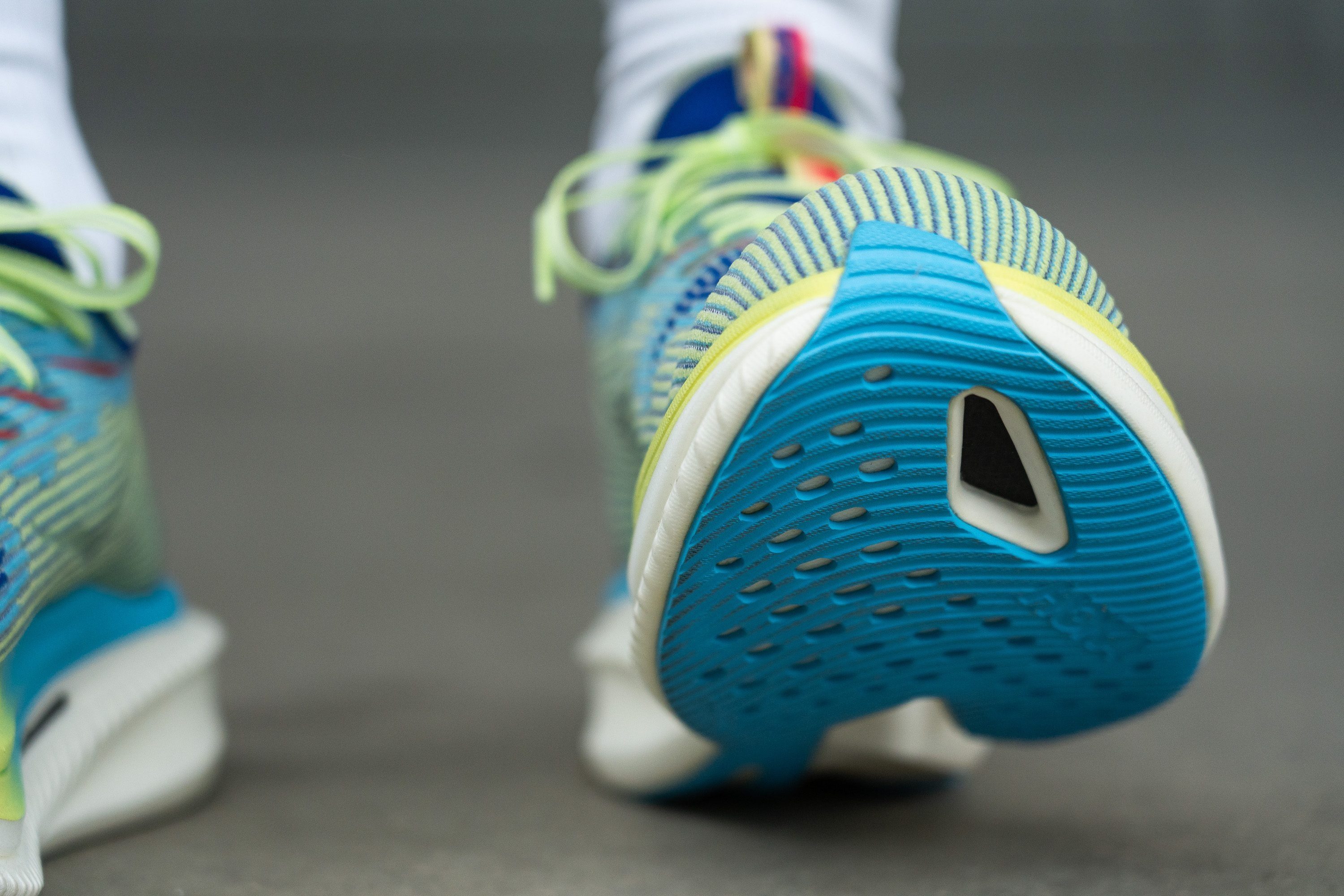
Shoes with lower stack height might promote a midfoot or forefoot strike simply because there’s not enough cushion to absorb the impact forces happening when you land on your heel. If you’re a forefoot striker, pay attention to the forefoot stack height. You also might not need to pay for all the features packed at the heel of the shoe. If unsure, look at the collection of running shoes for forefoot and midfoot strike.
Landing on the midfoot in Lone Peak 8
To learn more about foot strike and its importance for runners, read our in-depth guide on foot strike.
Shock absorption and energy return of running shoes for forefoot/midfoot strike
High energy return means that the shoe is very responsive and lively and it means the shoe is equiped with so call leg-saving features. High shock absorption, on the other hand, means that the shoe does a wonderful job of dampening the impact, so your legs don't have to deal with extra stress. This means there will be no premature muscle fatigue. It's clear now why these 2 features are so important.
[/local_video]
If you're looking for a daily trainer for long miles or you're a heavy runner, prioritise shock absorption. If you're looking for a shoe for tempo/race days, prioritise energy return as well!
Shoe flexibility and stack height
Across the above-mentioned categories (from barefoot to maximalist), it’s obvious that with the increase in stack height, shoes get stiffer.
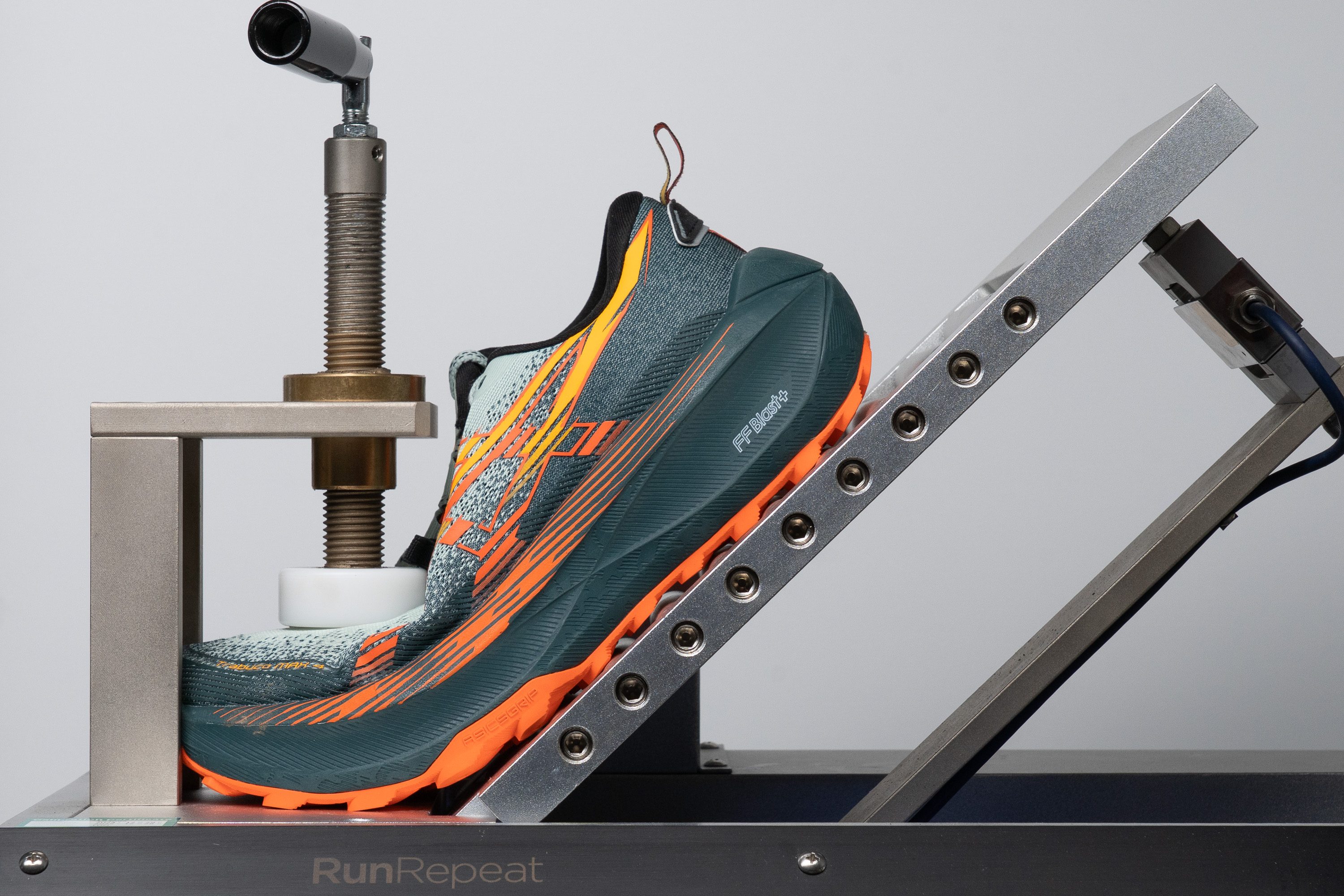
More midsole material makes the shoes more difficult to bend. Carbon plates add extra stiffness as well.
Disqualified when higher than 40mm
For recreational runners, there’s no limit in stack height. Currently, it goes as high as 50mm at the heel. However, for competitive runners, especially those aiming for the podium, it’s best to check the regulations of the race in question. Currently, World Athletics has a limit of 40mm in heel stack height for official competitions.
Anything above means disqualification.
